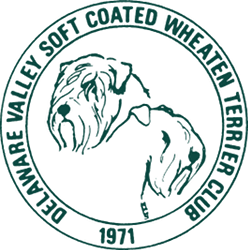Dating back to prehistoric times, Irish legend and folklore are filled with references to the native dogs of the island. The ancient Romans prized canines from the Emerald Isle and reproduced them on coins, musicals instruments, and tapestries. The dogs so admired were the hounds and hunting dogs of the nobility. Early travelers also spoke of the “cotters’ dogs.” These were smaller, all-purpose, easy-to-keep animals and, no doubt, included early terriers. This division remained for centuries. As quoted in The Dogs of Ireland by Anna Redlich, the law of William III in 1698 stated that “only persons owning an estate of freehold of the yearly value of 40 pounds, at least, or a personal estate of 1,000 pounds shall keep any hound, beagle, greyhound, or land-spaniel other than whelps under the age of twelve months.” The sporting or hunting dogs were reserved for the gentry; the terrier was the poor man’s dog.
The farmers of the counties of Munster–Tipperary, Cork, Waterford, Limerick and Kerry–used terriers as general farm dogs. They protected people and property, worked cattle, kept down vermin, hunted badgers and foxes, and were even used as gun dogs. While the exact history is unknown, it seems clear that the three long-legged terriers of Ireland–the Soft Coated Wheaten, the Irish, and the Kerry Blue—all share a common background. The Wheaten was also probably involved in the development of the short-legged Glen of Imaal Terrier. The Wheaten was late in being recognized as a distinct breed. The breed was recognized by the Irish Kennel Club in 1937.
Lydia Vogel of Massachusetts brought the first Wheatens to the United States in the 1940s, but real activity in the breed in this country did not begin until the late 1950s when the O’Connors and Arnolds imported their dogs. Wheatens were exhibited in the AKC Miscellaneous Class until October, 1973 when they became recognized and exhibited in regular classes.
